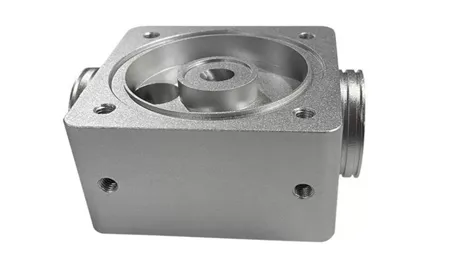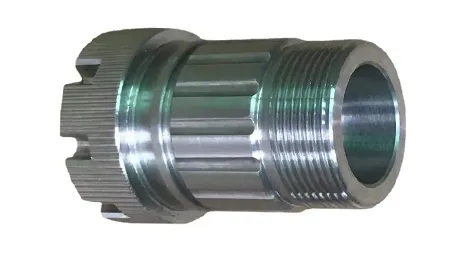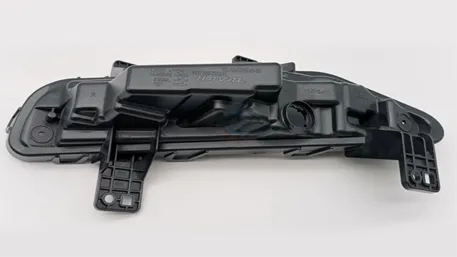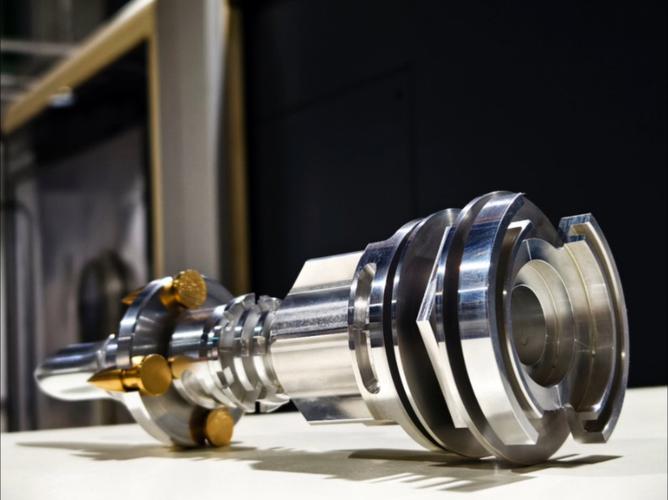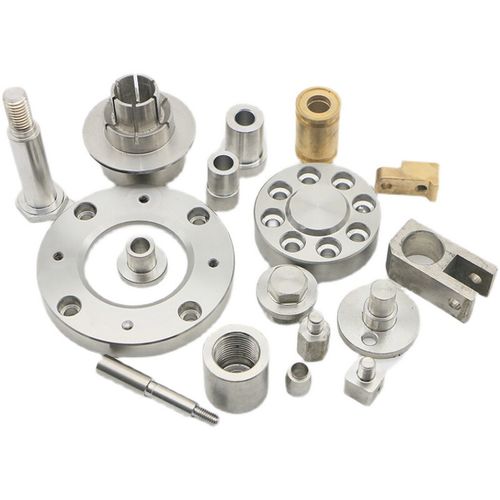With the rapid development of 3D printing technology, more and more personalized products have emerged, among which the custom 3D printed pen holder has become a highlight in the market with its unique charm and practicality. In this article, we will discuss in detail the material selection, design process, production process, customization services, design concepts and product features of customized 3D printed pen holders, to show readers the charm of this emerging product.
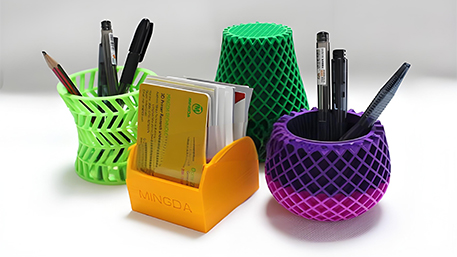
1. Material selection: diversity and environmentally friendly and important
The material selection of the customized 3D printed pen holder is the foundation of the product, which not only determines the appearance and texture of the pen holder, but also affects its durability and environmental protection.
Plastic material:
PLA (Polylactic Acid): PLA is a biodegradable plastic derived from renewable resources, extracted from natural substances such as corn starch or sugar cane. It has good printability and is capable of rendering fine surface textures and rich color options. At the same time, PLA material does not produce harmful substances during processing and meets environmental requirements.
ABS (Acrylonitrile Butadiene Styrene): ABS is a common thermoplastic with high strength and toughness, which is suitable for making pen holders that need to bear some weight. Although ABS is not as environmentally friendly as PLA, its stability and durability make it a popular choice for many consumers.
Metal Materials:
Stainless Steel: Stainless steel pen holders have excellent corrosion and abrasion resistance, and can maintain a bright appearance for a long time. At the same time, the high hardness of stainless steel can effectively protect the stationery inside the pen holder from external damage.
Titanium alloy: Titanium alloy pen holders are not only lightweight, but also have very high strength and toughness, suitable for making high-end customized products. However, titanium alloy costs more and is suitable for consumers who pursue extreme quality and personalization needs.
Other materials:
Wood: Wooden pen holders have a natural, rustic appearance and can create a warm, comfortable office environment. However, the hardness and stability of wood is poor, and requires special treatment to meet the requirements of 3D printing.
Ceramic: Ceramic pen holders have a unique artistic aesthetic and can enhance the taste of the office environment. However, ceramic materials are fragile and need to be handled and protected carefully.
2. Design process: from creativity to realization
The design process of custom 3D printing pen holder is a complex process from idea to realization, which requires close cooperation among designers, engineers and 3D printing technicians.
Creative conceptualization: designers put forward innovative and practical pen container design concepts based on market demand and consumer preferences. This process requires full research of the market to understand the needs and psychological expectations of consumers.
3D modeling: The designer uses professional 3D modeling software to transform the design concept into a digital model. During the modeling process, the size, shape, color, texture and other details of the pen holder need to be considered to ensure the aesthetics and practicality of the final product.
Optimization and adjustment: After the modeling is completed, designers and engineers make several communications and adjustments to optimize the model’s structure, wall thickness, and support structure, etc., in order to ensure the smoothness of the 3D printing process and the stability of product quality.
Slicing process: Engineers use 3D printing slicing software to transform the optimized 3D model into a series of thin layers, each layer is usually between 0.1mm and 0.3mm thick. The slicing process takes into account parameters such as print speed, temperature, and fill rate to ensure optimal printing results.
Printing preparation: Before printing, it is necessary to ensure that the 3D printer is in good working condition, select the appropriate printing material and nozzle size, and adjust the printer’s parameter settings according to the sliced file.
3. Production process: the perfect combination of technology and art
The production process of customized 3D printed pen holders is a key link in transforming digital models into physical products, which reflects the unique advantages and charm of 3D printing technology.
Fused Deposition Molding (FDM):
Principle: FDM is one of the most common 3D printing technologies, which uses heated nozzles to extrude molten plastic material layer by layer and stack it into a solid product.
PROCESS: During the printing process, the nozzle moves in the X and Y axis directions while stacking the material layer by layer according to the instructions of the slice file. After each layer is stacked, the platform will automatically drop a certain height to prepare for the next layer.
Advantage: FDM technology has the advantages of low cost, wide choice of materials and simple operation, which makes it suitable for making small and medium-sized penholders.
Selective Laser Sintering (SLS):
Principle: SLS technology uses a laser beam to irradiate the powder material, causing it to sinter at a certain temperature and build up layer by layer into a solid product.
Process: During the printing process, the laser beam sinter selectively on the powder layers according to the instructions of the slicing file. Once the sintering is complete, the table is lowered to a certain height and a new layer of powder is laid on top to continue the sintering process with the next layer.
Advantage: SLS technology is able to produce more complex and finer penstock structures with good surface quality and high strength.
Other Fabrication Processes:
Light-curing stereoforming (SLA): SLA technology uses a laser beam to irradiate a liquid resin, which cures and builds up layer by layer into a solid product.Penholders made by SLA technology have the advantages of a smooth surface and high precision, but at a higher cost.
Metal 3D printing: Metal 3D printing technology can produce pen holders with high strength and complex structure, but the cost is high and requires professional post-treatment process.
4. Customized service: to meet personalized needs
The biggest attraction of custom 3D printed pen holders is that they can provide personalized customization services to meet consumers’ unique needs and aesthetic preferences.
Size customization: Consumers can choose different sizes and shapes of pen holders according to their preferences and actual needs. For example, long pen holders are suitable for longer stationery, while round or square pen holders are more suitable for shorter or irregular stationery.
Color customization: Consumers can choose different colors of pen holders according to their personal preferences or the needs of the office environment, and 3D printing technology enables a wide range of colors to be selected, including monochrome, gradient, and patterned colors.
Material customization: Consumers can choose different printing materials according to their budget and needs. For example, for consumers who pursue environmental protection, they can choose PLA material; for consumers who need to bear heavier stationery, they can choose metal materials such as stainless steel or titanium alloy.
Functional customization: In addition to the basic stationery storage function, consumers can also customize pen holders with other functions according to their personal needs. For example, magnetic design can be added to facilitate opening and closing; USB charging port can be added to charge cell phones or other devices; pen holders or card slots can also be added to facilitate the placement of stationery.
Design customization: Consumers can provide their own design sketches or digital models for secondary creation and optimization by professional designers. The designers will adjust the details of the pen holder’s appearance design, texture treatment, color matching, etc. according to the consumer’s needs and preferences, to ensure the uniqueness and aesthetics of the final product.
5. Design concept: both functionality and aesthetics are emphasized
The design concept of the customized 3D printed pen holder lies in the perfect combination of function and aesthetics, creating a product that is both practical and artistically beautiful.
Pragmatism: the main function of the pen holder is to organize stationery, so the designer needs to give full consideration to its practicality in the design. For example, the volume and height of the pen container can be reasonably designed to ensure that it can accommodate commonly used stationery; multiple separation areas can be designed to facilitate the classification and storage of different types of stationery; a non-slip base or anti-rolling design can also be added to ensure the stability of the pen container.
Minimalist aesthetics: Minimalist design style can make people feel peaceful and comfortable, which helps to enhance the overall aesthetics of the office environment. Designers can use clean lines, regular geometric shapes and pure color combinations when designing pen holders to create a simple yet refined aesthetic.
Personalized expression: The personalization service of custom 3D printed pen holders allows consumers to incorporate their unique personalities and aesthetic preferences into the product. Designers can understand their interests, professional background, cultural background and other information through communication and exchange with consumers, and incorporate these elements into the design of the pen holder to create products with personalized characteristics.
Environmental awareness: With the enhancement of people’s environmental awareness, more and more consumers start to pay attention to the environmental performance of products. When designing pen holders, designers can choose environmentally friendly printing materials and processes to reduce the impact on the environment. At the same time, it can also be designed to be detachable and recyclable structure, which is convenient for consumers to make secondary use or disposal after use.
Sixth, product characteristics: unique charm and advantages
Customized 3D printed pen holders have unique charms and advantages that make them stand out in the stationery market.
Personalized customization: Custom 3D printed pen holders can meet consumers’ personalized needs, whether in terms of size, color, material or function, all of which can be customized according to personal preferences. This personalized customization service makes the pen holder not only practical, but also has a unique artistic aesthetic.
High-precision printing: 3D printing technology is characterized by high-precision printing, which can produce fine textures and details. This makes the appearance of the pen holder more beautiful, and also helps to improve the durability and stability of the product.
Material Versatility: Custom 3D printed pen holders can be printed in a wide range of materials, including plastic, metal, and wood. These materials have different textures and properties, which can meet the needs and preferences of different consumers.
Environmental performance: customized 3D printed pen holders can choose environmentally friendly printing materials and processes to reduce the impact on the environment. Meanwhile, the detachable and recyclable structure design also helps to realize the recycling of resources.
Rapid production: Compared with traditional manufacturing processes, 3D printing technology is characterized by rapid production. From design to finished product, the entire production process can be completed in a short period of time, greatly shortening the product launch cycle.
Creative design: the creative design service of customized 3D printed pen holders enables consumers to incorporate their own creativity and ideas into the product. This creative design possibility not only enriches the variety and form of products, but also provides consumers with more choices and fun.
Conclusion
With its unique charm and practicality, customized 3D printed pen holders are gradually emerging in the stationery market. From the choice of materials to the design process, production process, customization services, design concepts and product characteristics, custom 3D printed pen holders have shown their unique advantages and values. In the future, with the continuous development and improvement of 3D printing technology, customized 3D printed pen holders will have a broader development prospect and unlimited possibilities.

